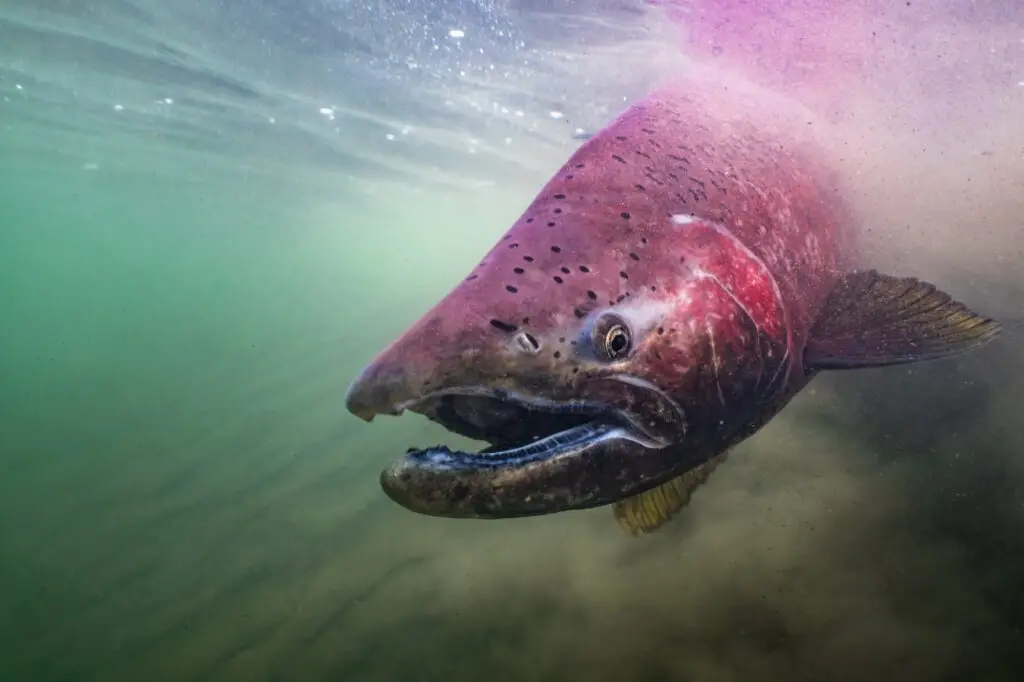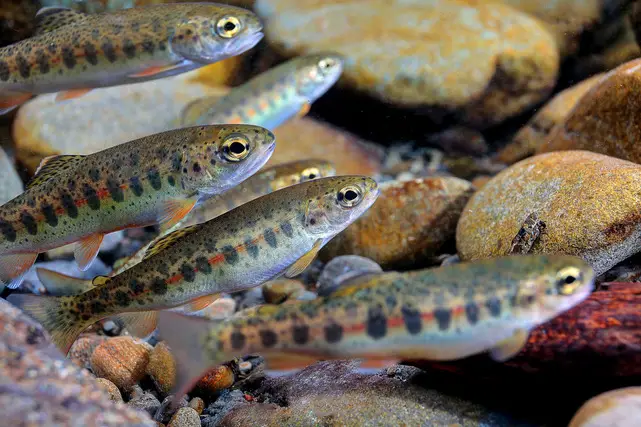
We are proud to share an important update on Wild Fish Conservancy’s efforts to protect the Pacific Northwest’s vital wild fish populations and the laws that protect them.
Through two significant legal actions, we are holding the federal government accountable for its responsibilities under the Endangered Species Act (ESA)— one of the most effective tools we have to prevent extinction, but it only works when it’s implemented. With your support, we’re making sure that these laws are fully enforced, giving these at-risk species the protection they deserve. Thank you for everything you make possible!

Feds Delay Protections for Alaska Chinook Amid Worst Returns in History
In Alaska’s waters, where salmon have long shaped both ecosystems and communities, we are witnessing a troubling, chronic decline in Chinook salmon. Despite their historical abundance, data shows sharp declines in abundance, size, age, diversity, and spatial structure. In response, Wild Fish Conservancy filed a formal petition in January 2024, calling for federal protection for at-risk Chinook populations in Alaska’s Gulf of Alaska.
Just last week, we notified NOAA of our intent to sue for disregarding their legally required deadline to complete a species status assessment and issue a 12-month finding on whether these at-risk populations warrant protection under the ESA. By missing these deadlines, NOAA isn’t just violating the law, they are pushing Alaskan Chinook closer to extinction, starving ecosystems and communities that rely on these fish.
The infographic below shows the steps of the ESA-listing process from beginning to end. The area highlighted in red shows the current status of the petition, which required NOAA to complete the status review and issue their 12-month finding by the January 11, 2025 deadline.

A closer look at 2024 data for the Gulf of Alaska paints a sobering picture: Cook inlet and Kodiak Island streams, world-renowned for Chinook salmon, saw the worst returns on record. Runs that used to number in the tens of thousands have returned at only a couple hundred, or in some of the most severe cases, less than 100 Chinook in the last year. The Kenai River that once produced the world’s largest Chinook has now gone three consecutive years without any of its largest, oldest age-7 salmon returning.
Over time, steadily declining returns have resulted in consecutive years of emergency fishery closures for in-river commercial, recreational, and subsistence fisheries, including for indigenous communities. As recent as two days ago, Alaska announced new restrictions and complete closures for a number of Chinook fisheries in the Gulf of Alaska.
Meanwhile, Alaska’s government continues to authorize and defend large-scale commercial ocean fisheries that harvest or kill as bycatch Chinook from these same populations. Instead of returning to sustain in-river communities and ecosystems, these ocean-caught Chinook, which include large numbers of migrating at-risk Chinook from Washington, Oregon, and British Columbia, are then certified and marketed as ‘sustainable’ Alaskan Chinook.

562 Days Late, Olympic Peninsula Steelhead Are Still Waiting for Protection
NOAA’s failure to meet its legal deadlines is part of a troubling pattern of neglecting the ESA and ignoring the urgent realities that species on the brink of extinction simply don’t have time to wait.
On the Olympic Peninsula, another species continues to decline while NOAA delays ESA protections. Alongside our partners at The Conservation Angler, we filed a lawsuit last month challenging NOAA for failing to issue a final determination on our 2022 petition seeking federal protection for Olympic Peninsula steelhead. NOAA itself acknowledges the risks these fish face. Their status assessment prepared to inform a final decision determined they face a ‘moderate risk of extinction’, yet as of today, the agency is now 562 days overdue in issuing a final determination that would allow the recovery planning process to begin.
For Alaskan Chinook and Olympic Peninsula steelhead, every day of inaction allows the threats facing these fish to intensify, making their survival and recovery even harder to achieve. NOAA’s repeated failures expose systemic dysfunction within the agency and emphasize the urgent need for these legal actions.
We firmly believe the public should not have to litigate to compel federal agencies to follow the law. However, these legal actions are essential to securing and enforcing protections already warranted under the ESA. When we defend the requirements of the ESA, we unlock crucial resources for recovery planning, habitat restoration, and coordinated conservation efforts that have helped many species recover.
Your support strengthens this work. Whether through supporting legal action, participating in habitat restoration, or raising awareness, we are so grateful to all of our members for the vital role you play in protecting these irreplaceable species. Together, we can help ensure these iconic fish populations survive and recover for future generations.
Learn more about our environmental law and policy initiatives.
Cover Photo: Chinook salmon, Conrad Gowell
Join our mailing list to recieve important updates on our work, the latest wild fish news, & opportunities to take action to support wild fish.
This site is protected by reCAPTCHA and the Google Privacy Policy and Terms of Service apply.
Wild Fish Conservancy is recognized as a 501(c)3 non-profit by the IRS